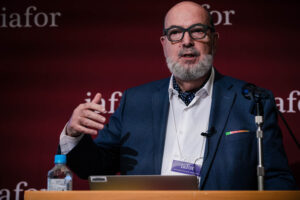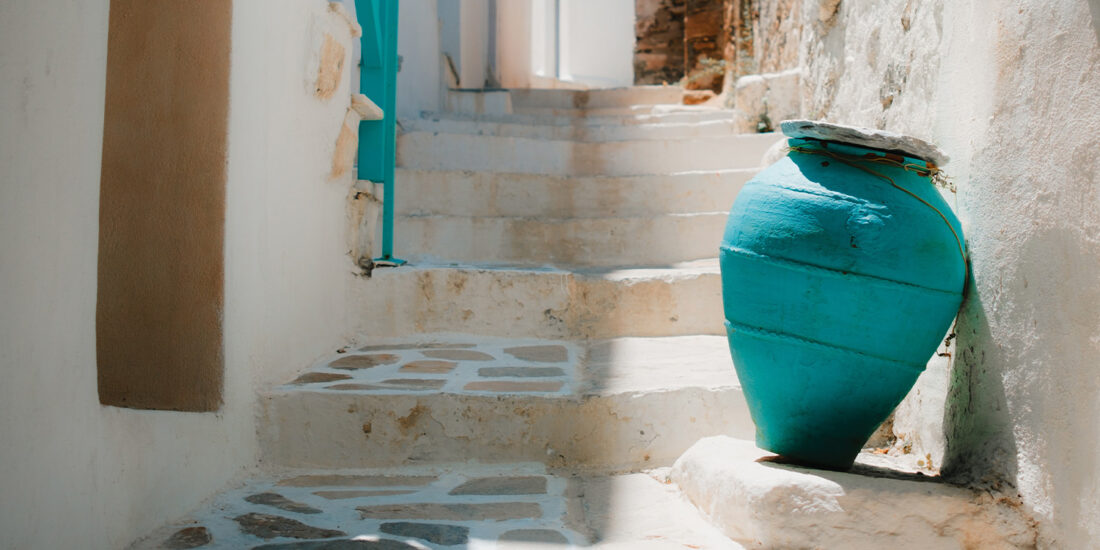IAFOR Journal of Arts & Humanities: Volume 10 – Issue 1
Editor-in-Chief: Alfonso J. García-Osuna, from Hofstra University & The City University of New York, Kingsborough New York, USA.
Published: August 16, 2023
ISSN: 2187-0616
https://doi.org/10.22492/ijah.10.1
Dear readers,
In line with established tradition, this volume represents our continuing endeavour to unfurl the vast tapestry of the arts and humanities in a profound, inclusive, and illuminating manner. Herein we embark upon an expedition to find the new directions taken by the arts and humanities in their interplay with new technologies. Several of our contributors attempt to throw light on the manner in which the Internet, Artificial Intelligence and new media are converging with our creative imagination and artistic expression to structure the cognitive framework of the modern world.
The articles included herein are a treasure trove of cogent analyses that resonate across a wide spectrum of interests. They epitomise the humanistic endeavour to better understand the complexities of our past and present while envisaging the contours of our future.

The Journal Editor, Alfonso J. García-Osuna, speaking at the 14th Asian Conference on Arts & Humanities (ACAH2023) and The 14th Asian Conference on the Social Sciences (ACSS2023), Tokyo, May 2023.
In this regard, in his article “A Structural Analysis of Religious Legends about an Iconic Image in the Philippines”, José Macatangay conducts a structural analysis of seven legends surrounding an iconic image in the Philippines, the Santo Niño de Cebú. The corpora used for the study are limited to the legends on healing people’s illnesses through the Santo Niño’s miraculous interventions. The study identifies the binary oppositions found in the legends, derives syntagmatic sequences or mythemes and their variations from them, sheds light on the central message of each legend based on the mythemes, and relates each legend to one another.
https://doi.org/10.22492/ijah.10.1.01
In “Digitalised Responses: Understanding the Digital Literary Spaces in the Light of Keshava Guha’s Accidental Magic”, Sapphire Mahmood Ahmed and K. Rizwana Sultana study how digital technology is adopted and utilised by literary readers in Accidental Magic. It also analyses the impact of digital technology on the art of storytelling. The paper concludes that online communities have introduced a new means of storytelling, which, unlike what was the case in the pre-internet era, is now a two-way process. Guha’s novel illustrates how online platforms impact people’s lives, suggesting that digital platforms have the power to change the dynamics of human relationships and alter reader interactions with literature in general.
https://doi.org/10.22492/ijah.10.1.02
Preethika S and Chitra Sivasubramaniam in “Legislation, Reaction and Ecological Degradation: An Eco-critical Analysis of John Grisham’s The Appeal”, studies the ways in which author John Grisham, an attorney by profession, elaborates on people’s response to the slow process of environmental deterioration in his novel The Appeal (2008). Meena shows how Grisham painstakingly depicts the tragedy of the inhabitants of a degrading bio-region and provides insights into the gradual process of environmental litigation in the contemporary world.
https://doi.org/10.22492/ijah.10.1.03
In “Television as a Tool of Memory and Identity in Khaled Hosseini’s Novels”, Priya Meena analyses how in Khaled Hosseini’s novels, television assumes the function of capturing, collating, and disseminating personal and cultural memories. Its significance is especially pronounced in the context of The Kite Runner and A Thousand Splendid Suns, where television’s role as a tool for constructing memories and shaping the identities of the characters is scrutinized by the author. The ramifications of the Taliban’s television ban are also examined in this paper, highlighting how this drastic measure has significantly impacted the nation’s culture.
https://doi.org/10.22492/ijah.10.1.04
In “Historicising Foreign Powers’ Intervention in the Nigeria-Biafra War (1967-1970)”, Uwomano Okpevra sets out to historicise and deconstruct determinant factors for the role played by foreign intervention in the war. The article employs both primary and secondary data to achieve its objective and reveal national interests and foreign policy objectives – as expressed in economic, strategic and political objectives – that were factors in the foreign powers’ intervention in the Nigeria-Biafra War.
https://doi.org/10.22492/ijah.10.1.05
In Priyanka Singla’s “Impact of Broken Homes on Children’s Psychology in Indian Writing in English”, the author analyses the reasons why Indian Writing in English has been successful in portraying the devastating effects of broken homes on children. The paper discusses the critical portrayal of the impact of broken homes on child psychology in Indian Writing in English. Such representation provides an insightful view of the psychological and emotional challenges faced by children living in such situations.
https://doi.org/10.22492/ijah.10.1.06
In “Memory and Identity in Haruki Murakami’s Colorless Tsukuru Tazaki and His Years of Pilgrimage”, Nidhu Kumar Dhar discusses how Murakami’s novels present an opportunity to understand the workings of memory and how people are led by its dictates. His characters often find themselves recollecting their past in order to sustain a present existence that is marred by some type of crisis. As they progress in time, protagonists experience a profound sense of disequilibrium that prompts them to return to the past in order to rebalance their self’s sense of value. In this regard, Dhar’s paper investigates the dynamics of memory as well as its role in the formation of identity in Haruki Murakami’s novel Colorless Tsukuru Tazaki and His Years of Pilgrimage (2014).
https://doi.org/10.22492/ijah.10.1.07
In “Turbulence of the Fin-de-siècle: Arts Through the Looking-Glass of Intermediality” Mykyta Isagulov addresses the fin-de-siècle period as a time when most of what are called intermedial processes, that is to say, those processes that arbitrate aesthetic design at the intersection between different media, began to play a substantial role in the production of cultural artifacts. The epoch is investigated through the prism of intermediality, which manifested itself as a valuable tool in the development of the arts and media, particularly after the birth of photography and cinematography.
https://doi.org/10.22492/ijah.10.1.08
Sushrita Acharjee, in “The Poetics of Borderlands: Reflections on Oral Folk Poetry from Assam’s Barak Valley during Bangladesh Liberation War”, argues that despite the abject living conditions in the saturated refugee camps in the West Bengal, Tripura and Assam borderlands, the space inhabited by the war’s refugees was charged with powerful national imaginaries laced with an eclectic blend of emotions – resistance, hope, nostalgia, desire, aspiration. Drawing on ethnographic and anthropological research, this essay explores the various forms of folk poetry that emerged out of these refugee camps and guerrilla army training sectors during the war.
https://doi.org/10.22492/ijah.10.1.09
In “Gardening as Activism: Cultivating Human Minds in A Gardener in Wasteland”, Arundhati Sen studies Aparajita Ninan and Srividya Natarajan’s graphic novel A Gardener in the Wasteland: Jotiba Phule’s Fight for Liberty (2011) by revisiting Jotiba Phule’s ground-breaking text Gulamgiri (1873), examining issues of contemporaneity and the continuity of caste explicit in them, and attempting to articulate a conversation between the past and the contemporary reality of casteism. The study focuses on the centrality of the metaphor of the garden in highlighting the gravity of the caste problem and its larger implications in the lives of India’s marginalised Dalit community.
https://doi.org/10.22492/ijah.10.1.10
Ankita Sen studies “The Significance of Colour Symbolisms in Angela Carter’s The Bloody Chamber (1979)” by focussing on the recurrent invocation of three major colours, namely red, black, and white; the paper studies how chromatic coding becomes a potent rhetorical device through which the psychological and physical implications of gendered violence are negotiated in the story.
https://doi.org/10.22492/ijah.10.1.11
Abhirami S and Smrutisikta Mishra’s “(Re)Visiting the Traumatised Indian Matriarch Through Contemporary Retellings: A Psycho-Cultural Exploration” Focuses on Kavita Kané ‘s The Fisher Queen’s Dynasty, suggesting that the trauma experienced by protagonist Satyavati in her infancy shaped her character and her actions as the Queen of Hastinapur. The authors analyse the influence of trauma in the protagonist’s life and how it led to her determination to re-establish a powerful clan.
https://doi.org/10.22492/ijah.10.1.12
I follow on with my editor’s essay “U.S. Civil War Redux? A Prevue”.
https://doi.org/10.22492/ijah.10.1.13
In a world where specialisation often reigns supreme, this edition stands as a celebration of intellectual latitude and creativity. The IAFOR Journal of Arts and Humanities embraces the exceptional and encourages the unexpected, fostering an environment where radical ideas and divergent interpretations are welcome.
Dr Alfonso J. García-Osuna
Editor

